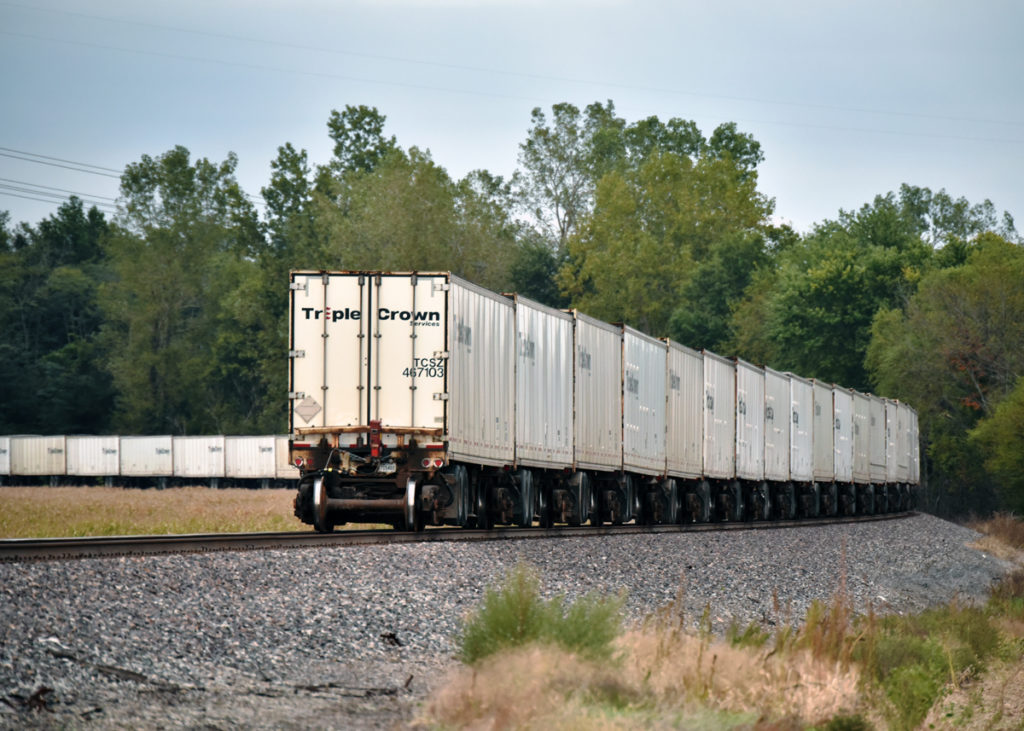
A Triple Crown trailer train heads westbound out of Huntington, Ind., in September 2015. 15273-21 Randy Olson Question: I occasionally see Triple Crown semi-trailer trains on a route that runs near Decatur, Ill. Since these trailers are attached directly to one another and are not on flatcars, how are the frames of these trailers reinforced […]
Read More…
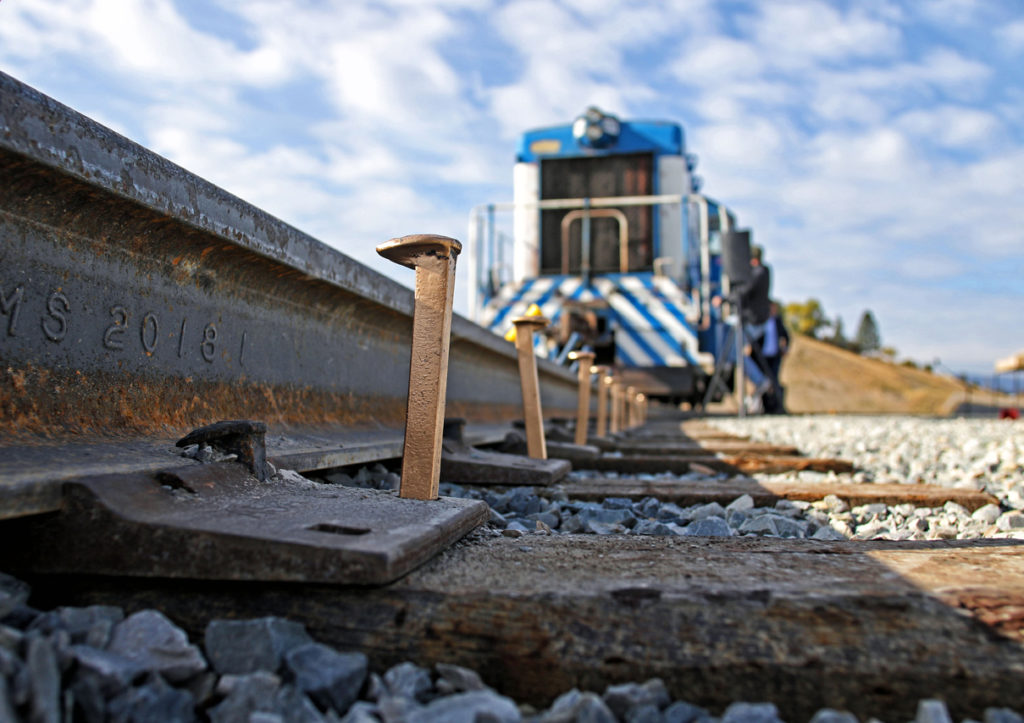
Golden spikes are popular, and have long been used as symbols of completing an important railroad construction project. In October 2018, officials drove multiple gold-colored track spikes into a new industrial park track in Kalispell, Mont. Important as they are as symbols, the spikes in this ceremony were not intended to function as standard railroad […]
Read More…

Missouri-Kansas-Texas drovers’ caboose No. 350 shows off the car’s extra length. The cars could accommodate extra riders overseeing livestock shipments. Harold Schupp Q Where, in the train’s consist, were drovers’ cabooses placed? Were they at the rear with the regular caboose, or somewhere in the train’s consist near the stock cars? Were they used only […]
Read More…

BNSF Railway ES44DC No. 7765 leads an intermodal train through a curved main line at Siberia, Calif., in September 2008. 08357-7 Steve Schmollinger Question: In many photos taken on open land in the West and Midwest, you can see curvature in the tracks even though there are no visible obstacles such as rock cuts, rivers, […]
Read More…
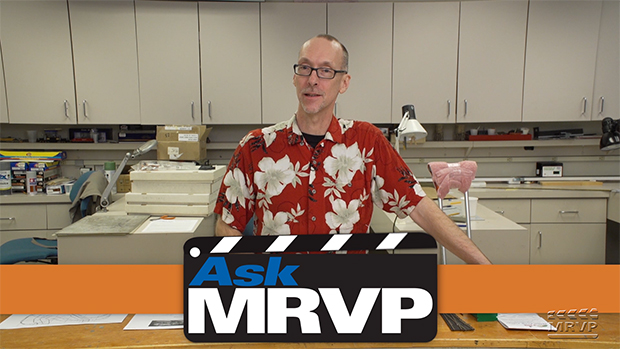
Having trouble viewing this video? Please visit our Video FAQ page David Popp breaks out the Hawaiian shirt (and crutch) for this spring episode of Ask MRVP! This month he addresses your questions regarding trackwork, wiring, the glass on Cody’s workbench, packing a layout for a move, painting, and more! Watch, learn, and then […]
Read More…

Having trouble viewing this video? Please visit our Video FAQ page David Popp breaks out the Hawaiian shirt (and crutch) for this spring episode of Ask MRVP! This month he addresses your questions regarding trackwork, wiring, the glass on Cody’s workbench, packing a layout for a move, painting, and more! Watch, learn, and then […]
Read More…
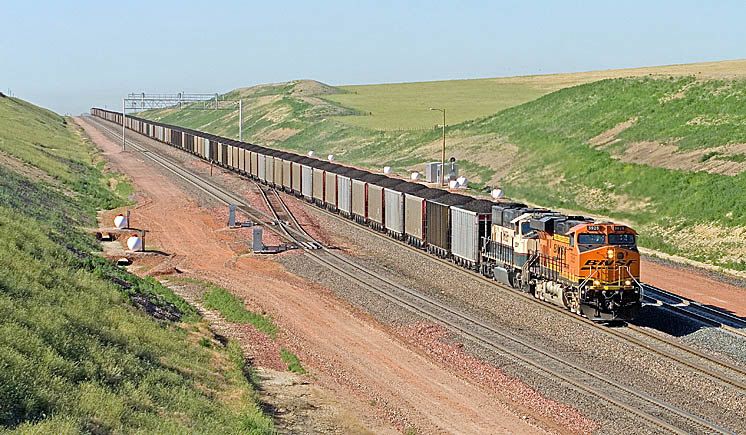
A northbound BNSF coal train passes Coal Creek Junction, Wyo., in July 2008. Steve Glischinski Q The picture on page 42 of the March 2016 issue shows some interesting trackside equipment. It looks like they could be switch heater propane tanks, however, I don’t see any switches. – Bruce Bussert, Saratoga Springs, N.Y. A The […]
Read More…
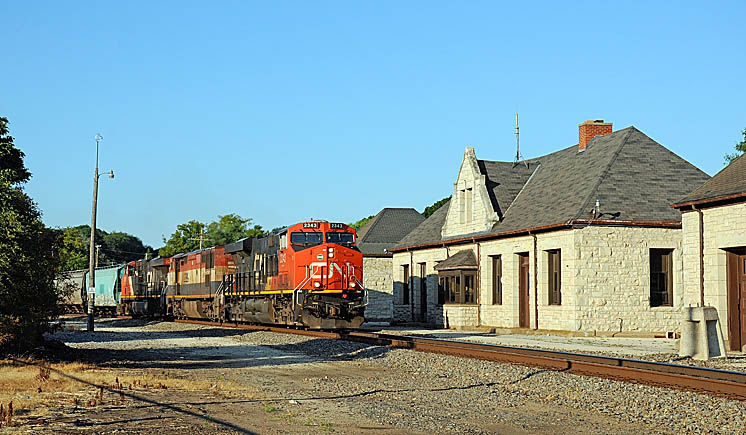
A southbound CN freight passes the former Soo Line station in Waukesha, Wis., in 2012. Brian Schmidt Q How did Canadian National end up operating the former Soo Line route through Wisconsin. I thought the Soo was affiliated with Canadian Pacific. – Kirk Gobain, Dodge City, Kan. A The Soo Line acquired the Milwaukee Road […]
Read More…
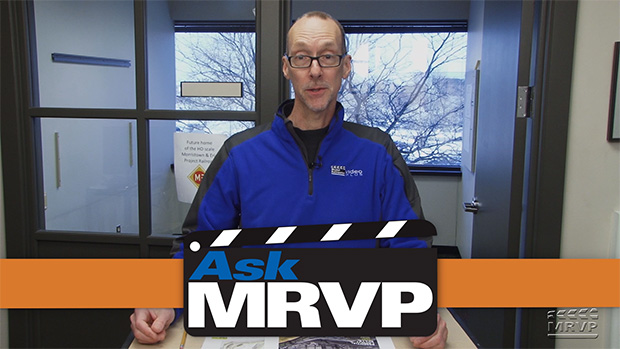
Having trouble viewing this video? Please visit our Video FAQ page Ask MRVP host David Popp gets back to the task of answering your specific questions! In this episode, he tackles topics related to DCC wiring, layout planning, applying static grass, and many other inquiries from MRVP subscribers. […]
Read More…

Having trouble viewing this video? Please visit our Video FAQ page Ask MRVP host David Popp gets back to the task of answering your specific questions! In this episode, he tackles topics related to DCC wiring, layout planning, applying static grass, and many other inquiries from MRVP subscribers. […]
Read More…
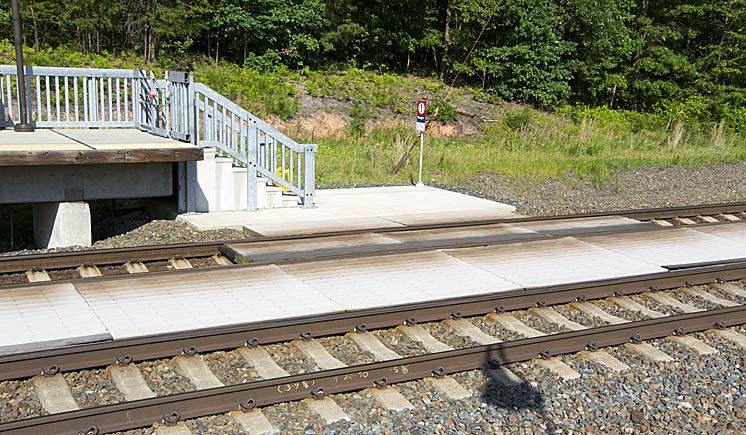
A track-level platform at BWI Thurgood Marshall Airport station near Baltimore enables the use of the middle track, at bottom, for passenger boarding and detraining. Note the yellow step box behind the railing, for use with the lower platforms. Brian Schmidt Q I live near Amtrak’s Northeast Corridor and see short track-level platform extensions at […]
Read More…

Garden railroad electrical/electricity questions and answers Is it safe to power your trains outdoors? Will I get electrocuted? It’s completely safe to run track power outdoors! Our trains, like those in the smaller scales, run on low-voltage DC, usually 18-24V. Thus, it is perfectly safe to run your trains outdoors, even in the rain or […]
Read More…










